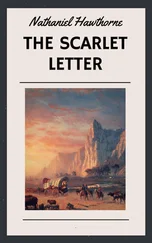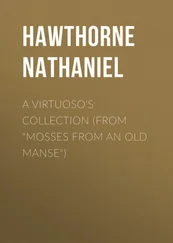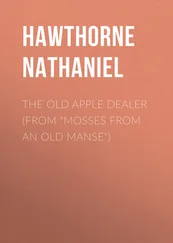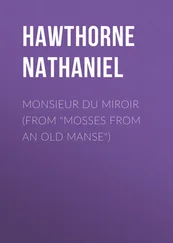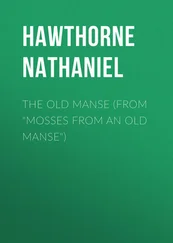Nathaniel Hawthorne - Our Old Home - A Series of English Sketches
Здесь есть возможность читать онлайн «Nathaniel Hawthorne - Our Old Home - A Series of English Sketches» — ознакомительный отрывок электронной книги совершенно бесплатно, а после прочтения отрывка купить полную версию. В некоторых случаях можно слушать аудио, скачать через торрент в формате fb2 и присутствует краткое содержание. Жанр: literature_19, foreign_antique, foreign_prose, на английском языке. Описание произведения, (предисловие) а так же отзывы посетителей доступны на портале библиотеки ЛибКат.
- Название:Our Old Home: A Series of English Sketches
- Автор:
- Жанр:
- Год:неизвестен
- ISBN:нет данных
- Рейтинг книги:4 / 5. Голосов: 1
-
Избранное:Добавить в избранное
- Отзывы:
-
Ваша оценка:
- 80
- 1
- 2
- 3
- 4
- 5
Our Old Home: A Series of English Sketches: краткое содержание, описание и аннотация
Предлагаем к чтению аннотацию, описание, краткое содержание или предисловие (зависит от того, что написал сам автор книги «Our Old Home: A Series of English Sketches»). Если вы не нашли необходимую информацию о книге — напишите в комментариях, мы постараемся отыскать её.
Our Old Home: A Series of English Sketches — читать онлайн ознакомительный отрывок
Ниже представлен текст книги, разбитый по страницам. Система сохранения места последней прочитанной страницы, позволяет с удобством читать онлайн бесплатно книгу «Our Old Home: A Series of English Sketches», без необходимости каждый раз заново искать на чём Вы остановились. Поставьте закладку, и сможете в любой момент перейти на страницу, на которой закончили чтение.
Интервал:
Закладка:
You can meet this figure in the street, and live, and even smile at the recollection. But conceive of her in a ball-room, with the bare, brawny arms that she invariably displays there, and all the other corresponding development, such as is beautiful in the maiden blossom, but a spectacle to howl at in such an over-blown cabbage-rose as this.
Yet, somewhere in this enormous bulk there must be hidden the modest, slender, violet-nature of a girl, whom an alien mass of earthliness has unkindly overgrown; for an English maiden in her teens, though very seldom so pretty as our own damsels, possesses, to say the truth, a certain charm of half-blossom, and delicately folded leaves, and tender womanhood shielded by maidenly reserves, with which, somehow or other, our American girls often fail to adorn themselves during an appreciable moment. It is a pity that the English violet should grow into such an outrageously developed peony as I have attempted to describe. I wonder whether a middle-aged husband ought to be considered as legally married to all the accretions that have overgrown the slenderness of his bride, since he led her to the altar, and which make her so much more than he ever bargained for! Is it not a sounder view of the case, that the matrimonial bond cannot be held to include the three fourths of the wife that had no existence when the ceremony was performed? And as a matter of conscience and good morals, ought not an English married pair to insist upon the celebration of a silver-wedding at the end of twenty-five years, in order to legalize and mutually appropriate that corporeal growth of which both parties have individually come into possession since they were pronounced one flesh?
The chief enjoyment of my several visits to Leamington lay in rural walks about the neighborhood, and in jaunts to places of note and interest, which are particularly abundant in that region. The high-roads are made pleasant to the traveller by a border of trees, and often afford him the hospitality of a wayside bench beneath a comfortable shade. But a fresher delight is to be found in the foot-paths, which go wandering away from stile to stile, along hedges, and across broad fields, and through wooded parks, leading you to little hamlets of thatched cottages, ancient, solitary farm-houses, picturesque old mills, streamlets, pools, and all those quiet, secret, unexpected, yet strangely familiar features of English scenery that Tennyson shows us in his idyls and eclogues. These by-paths admit the wayfarer into the very heart of rural life, and yet do not burden him with a sense of intrusiveness. He has a right to go whithersoever they lead him; for, with all their shaded privacy, they are as much the property of the public as the dusty high-road itself, and even by an older tenure. Their antiquity probably exceeds that of the Roman ways; the footsteps of the aboriginal Britons first wore away the grass, and the natural flow of intercourse between village and village has kept the track bare ever since. An American farmer would plough across any such path, and obliterate it with his hills of potatoes and Indian corn; but here it is protected by law, and still more by the sacredness that inevitably springs up, in this soil, along the well-defined footprints of centuries. Old associations are sure to be fragrant herbs in English nostrils; we pull them up as weeds.
I remember such a path, the access to which is from Lovers' Grove, a range of tall old oaks and elms on a high hill-top, whence there is a view of Warwick Castle, and a wide extent of landscape, beautiful, though bedimmed with English mist. This particular foot-path, however, is not a remarkably good specimen of its kind, since it leads into no hollows and seclusions, and soon terminates in a high-road. It connects Leamington by a short cut with the small neighboring village of Lillington, a place which impresses an American observer with its many points of contrast to the rural aspects of his own country. The village consists chiefly of one row of contiguous dwellings, separated only by party-walls, but ill-matched among themselves, being of different heights, and apparently of various ages, though all are of an antiquity which we should call venerable. Some of the windows are leaden-framed lattices, opening on hinges. These houses are mostly built of gray stone; but others, in the same range, are of brick, and one or two are in a very old fashion, – Elizabethan, or still older, – having a ponderous framework of oak, painted black, and filled in with plastered stone or bricks. Judging by the patches of repair, the oak seems to be the more durable part of the structure. Some of the roofs are covered with earthen tiles; others (more decayed and poverty-stricken) with thatch, out of which sprouts a luxurious vegetation of grass, house-leeks, and yellow flowers. What especially strikes an American is the lack of that insulated space, the intervening gardens, grass-plots, orchards, broad-spreading shade-trees, which occur between our own village-houses. These English dwellings have no such separate surroundings; they all grow together, like the cells of a honeycomb.
Beyond the first row of houses, and hidden from it by a turn of the road, there was another row (or block, as we should call it) of small old cottages, stuck one against another, with their thatched roofs forming a single contiguity. These, I presume, were the habitations of the poorest order of rustic laborers; and the narrow precincts of each cottage, as well as the close neighborhood of the whole, gave the impression of a stifled, unhealthy atmosphere among the occupants. It seemed impossible that there should be a cleanly reserve, a proper self-respect among individuals, or a wholesome unfamiliarity between families where human life was crowded and massed into such intimate communities as these. Nevertheless, not to look beyond the outside, I never saw a prettier rural scene than was presented by this range of contiguous huts. For in front of the whole row was a luxuriant and well-trimmed hawthorn hedge, and belonging to each cottage was a little square of garden-ground, separated from its neighbors by a line of the same verdant fence. The gardens were chockfull, not of esculent vegetables, but of flowers, familiar ones, but very bright-colored, and shrubs of box, some of which were trimmed into artistic shapes; and I remember, before one door, a representation of Warwick Castle, made of oyster-shells. The cottagers evidently loved the little nests in which they dwelt, and did their best to make them beautiful, and succeeded more than tolerably well, – so kindly did nature help their humble efforts with its verdure, flowers, moss, lichens, and the green things that grew out of the thatch. Through some of the open doorways we saw plump children rolling about on the stone floors, and their mothers, by no means very pretty, but as happy-looking as mothers generally are; and while we gazed at these domestic matters, an old woman rushed wildly out of one of the gates, upholding a shovel, on which she clanged and clattered with a key. At first we fancied that she intended an onslaught against ourselves, but soon discovered that a more dangerous enemy was abroad; for the old lady's bees had swarmed, and the air was full of them, whizzing by our heads like bullets.
Not far from these two rows of houses and cottages, a green lane, overshadowed with trees, turned aside from the main road, and tended towards a square, gray tower, the battlements of which were just high enough to be visible above the foliage. Wending our way thitherward, we found the very picture and ideal of a country church and churchyard. The tower seemed to be of Norman architecture, low, massive, and crowned with battlements. The body of the church was of very modest dimensions, and the eaves so low that I could touch them with my walking-stick. We looked into the windows and beheld the dim and quiet interior, a narrow space, but venerable with the consecration of many centuries, and keeping its sanctity as entire and inviolate as that of a vast cathedral. The nave was divided from the side aisles of the church by pointed arches resting on very sturdy pillars: it was good to see how solemnly they held themselves to their age-long task of supporting that lowly roof. There was a small organ, suited in size to the vaulted hollow, which it weekly filled with religious sound. On the opposite wall of the church, between two windows, was a mural tablet of white marble, with an inscription in black letters, – the only such memorial that I could discern, although many dead people doubtless lay beneath the floor, and had paved it with their ancient tombstones, as is customary in old English churches. There were no modern painted windows, flaring with raw colors, nor other gorgeous adornments, such as the present taste for mediaeval restoration often patches upon the decorous simplicity of the gray village-church. It is probably the worshipping-place of no more distinguished a congregation than the farmers and peasantry who inhabit the houses and cottages which I have just described. Had the lord of the manor been one of the parishioners, there would have been an eminent pew near the chancel, walled high about, curtained, and softly cushioned, warmed by a fireplace of its own, and distinguished by hereditary tablets and escutcheons on the enclosed stone pillar.
Читать дальшеИнтервал:
Закладка:
Похожие книги на «Our Old Home: A Series of English Sketches»
Представляем Вашему вниманию похожие книги на «Our Old Home: A Series of English Sketches» списком для выбора. Мы отобрали схожую по названию и смыслу литературу в надежде предоставить читателям больше вариантов отыскать новые, интересные, ещё непрочитанные произведения.
Обсуждение, отзывы о книге «Our Old Home: A Series of English Sketches» и просто собственные мнения читателей. Оставьте ваши комментарии, напишите, что Вы думаете о произведении, его смысле или главных героях. Укажите что конкретно понравилось, а что нет, и почему Вы так считаете.

